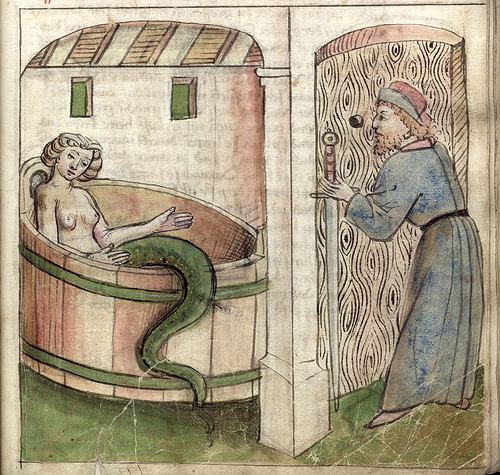 | ||
Charivari by melusine
Melusine (French:[melyzin] may-loo-ZEEN) (or Melusina) is a figure of European folklore, a feminine spirit of fresh water in a sacred spring or river. She is usually depicted as a woman who is a serpent or fish from the waist down (much like a mermaid). She is also sometimes illustrated with wings, two tails, or both. Her legends are especially connected with the northern and western areas of France, Luxembourg, and the Low Countries. She is also connected with Cyprus, where the French Lusignan royal house that ruled the island from 1192 to 1489 claimed to be descended from Melusine.
Contents
- Charivari by melusine
- Melusine the starbucks dragon queen updated
- Literary versions
- Legends
- Related legends
- References
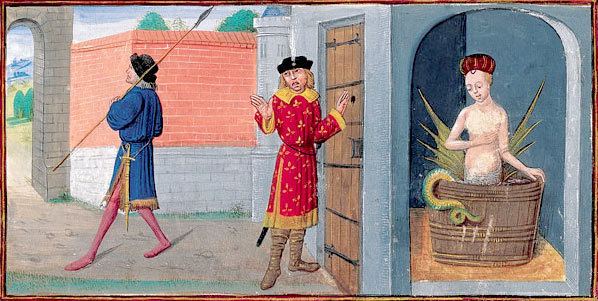
Melusine the starbucks dragon queen updated
Literary versions
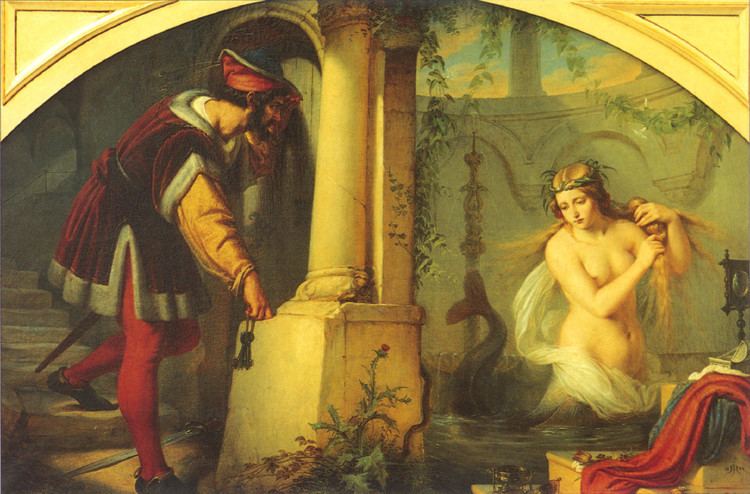
The most famous literary version of Melusine tales, that of Jean d'Arras, compiled about 1382–1394, was worked into a collection of "spinning yarns" as told by ladies at their spinning. Coudrette (Couldrette) wrote The Romans of Partenay or of Lusignen: Otherwise known as the Tale of Melusine, giving source and historical notes, dates and background of the story. He goes in to detail and depth about the relationship of Melusine and Raymondin, their initial meeting and the complete story.

The tale was translated into German in 1456 by Thüring von Ringoltingen, the version of which became popular as a chapbook. It was later translated into English c. 1500, and often printed in both the 15th century and the 16th century. A prose version is entitled the Chronique de la princesse (Chronicle of the Princess).
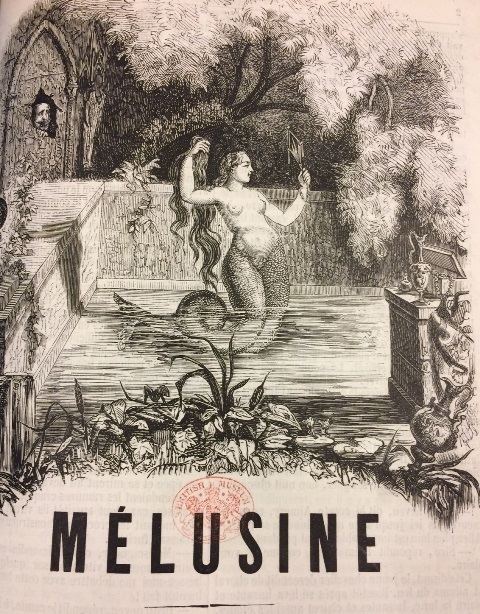
It tells how in the time of the Crusades, Elynas, the King of Albany (an old name for Scotland or Alba), went hunting one day and came across a beautiful lady in the forest. She was Pressyne, mother of Melusine. He persuaded her to marry him but she agreed, only on the promise — for there is often a hard and fatal condition attached to any pairing of fay and mortal — that he must not enter her chamber when she birthed or bathed her children. She gave birth to triplets. When he violated this taboo, Pressyne left the kingdom, together with her three daughters, and traveled to the lost Isle of Avalon.
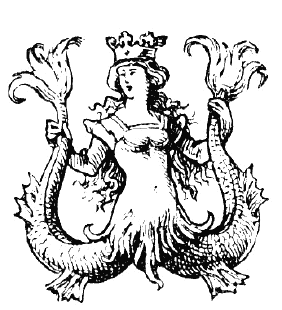
The three girls — Melusine, Melior, and Palatyne — grew up in Avalon. On their fifteenth birthday, Melusine, the eldest, asked why they had been taken to Avalon. Upon hearing of their father's broken promise, Melusine sought revenge. She and her sisters captured Elynas and locked him, with his riches, in a mountain. Pressyne became enraged when she learned what the girls had done, and punished them for their disrespect to their father. Melusine was condemned to take the form of a serpent from the waist down every Saturday. In other stories, she takes on the form of a mermaid.
Raymond of Poitou came across Melusine in a forest of Coulombiers in Poitou in France, and proposed marriage. Just as her mother had done, she laid a condition: that he must never enter her chamber on a Saturday. He broke the promise and saw her in the form of a part-woman, part-serpent, but she forgave him. When, during a disagreement, he called her a "serpent" in front of his court, she assumed the form of a dragon, provided him with two magic rings, and flew off, never to return.
In The Wandering Unicorn by Manuel Mujica Láinez, Melusine tells her tale of several centuries of existence, from her original curse to the time of the Crusades.
Legends
Melusine legends are especially connected with the northern areas of France, Poitou and the Low Countries, as well as Cyprus, where the French Lusignan royal house that ruled the island from 1192 to 1489 claimed to be descended from Melusine. Oblique reference to this was made by Sir Walter Scott who told a Melusine tale in The Minstrelsy of the Scottish Border (1802–1803) stating that
The Luxembourg family also claimed descent from Melusine through their ancestor Siegfried. When in 963 A.D. Count Siegfried of the Ardennes (Sigefroi in French; Sigfrid in Luxembourgish) bought the feudal rights to the territory on which he founded his capital city of Luxembourg, his name became connected with the local version of Melusine. This Melusina had essentially the same magic gifts as the ancestress of the Lusignans, magically making the Castle of Luxembourg on the Bock rock (the historical center point of Luxembourg City) appear the morning after their wedding. On her terms of marriage, she too required one day of absolute privacy each week. Alas, Sigfrid, as the Luxem-bourgish call him, "could not resist temptation, and on one of the forbidden days he spied on her in her bath and discovered her to be a mermaid. When he let out a surprised cry, Melusina caught sight of him, and her bath immediately sank into the solid rock, carrying her with it. Melusina surfaces briefly every seven years as a beautiful woman or as a serpent, holding a small golden key in her mouth. Whoever takes the key from her will set her free and may claim her as his bride." In 1997 Luxembourg issued a postage stamp commemorating her.
Martin Luther knew and believed in the story of another version of Melusine, die Melusina zu Lucelberg (Lucelberg in Silesia), whom he referred to several times as a succubus (Works, Erlangen edition, volume 60, pp 37–42). Johann Wolfgang von Goethe wrote the tale of Die Neue Melusine in 1807 and published it as part of Wilhelm Meisters Wanderjahre. The playwright Franz Grillparzer brought Goethe's tale to the stage and Felix Mendelssohn provided a concert overture "The Fair Melusina," his Opus 32.
Melusine is one of the pre-Christian water-faeries who were sometimes responsible for changelings. The "Lady of the Lake", who spirited away the infant Lancelot and raised the child, was such a water nymph. Other European water sprites include Lorelei and the nixie.
"Melusina" would seem to be an uneasy name for a girl-child in these areas of Europe, but Ehrengard Melusine von der Schulenburg, Duchess of Kendal and Munster, mistress of George I of Great Britain, was christened Melusine in 1667.
The chronicler Gerald of Wales reported that Richard I of England was fond of telling a tale according to which he was a descendant of a countess of Anjou who was in fact the fairy Melusine, concluding that his whole family "came from the devil and would return to the devil".
Related legends
The Travels of Sir John Mandeville recounts a legend about Hippocrates' daughter. She was transformed into a hundred-foot long dragon by the goddess Diane, and is the "lady of the manor" of an old castle. She emerges three times a year, and will be turned back into a woman if a knight kisses her, making the knight into her consort and ruler of the islands. Various knights try, but flee when they see the hideous dragon; they die soon thereafter. This appears to be an early version of the legend of Melusine.
